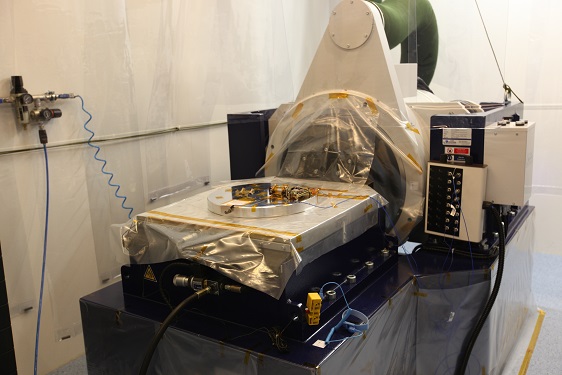You are here : OVSQENPITPresentation of the Technical ResourcesMechanical testing
- Partager cette page :
- PDF version
Mechanical testing
Vibrating Pot
The vibrating pot is a test method used to excite a vibrating structure. Vibration tests are essential because they make it possible to understand the dynamic behaviour of equipment, to predict how they might fail and to improve reliability. To cite an example, one can simulate the transport, preparation and launch, or even the orbital life of an instrument on board a satellite. Several principles of usage are possible depending on the type of test to be performed (random, sine, shock, resonance research and monitoring).

Photo: PIT
Technical characteristics of the pot
- Max sine force: 40 kN
- Max random force: 40 kN
- Max force in conventional shocks: 80 kN at 30 Hz
- Max peak-to-peak displacement: 51 mm
- Max speed: 1.8 m / s
- Max sine acceleration: 100 g
- Max random acceleration: 60 g
- Useful frequency from 5 Hz to 2500 Hz
The acquisition front-end can accommodate 18 measurement channels. We have 18 ICP accelerometric sensors (mixed: 3 axes, single axes, drop of water, etc).


